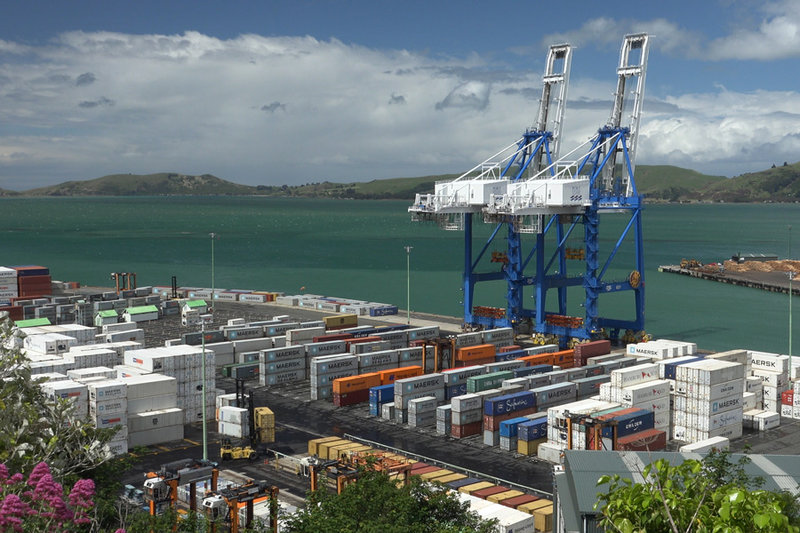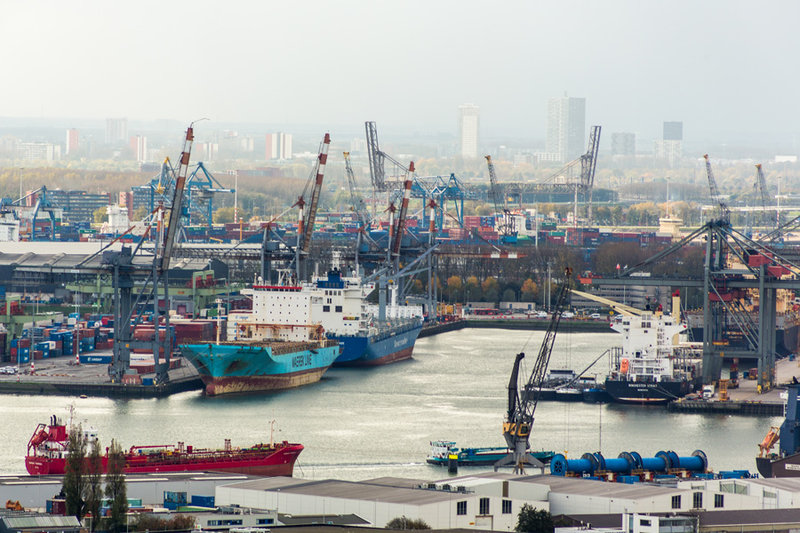Ports
NEPTUNES: measuring disruptive noise pollution from ships
Complaints about noise from seagoing vessels at berth are increasingly common. Now eleven ports from Europe, Australia and Canada have been jointly researching what causes airborne noise and how it can be mitigated. Frances Marcellin finds out more about the NEPTUNES project.
Image courtesy of
In April 2019
the Otago Daily Times ran several stories highlighting the rising number of complaints from local residents about the ship noise coming from Otago Harbour in New Zealand. The paper reports that the number of complaints have tripled this year compared with previous years since Maersk's Rio-class ships started berthing in the harbour.
Some residents’ sleepless nights are allegedly being caused by “a low, thumping noise from the ship’s generators” which “reverberates around the harbour”. The port is investigating an engineering solution because even though there are no maximum noise limits for the port, it must be managed as part of the district plan.
This is not an isolated incident. Ship noise is an increasing issue for the industry as it can have significant negative effects on those living in and around harbour areas.
Stuart Rivers, CEO of Sailors’ Society.
Image courtesy of Sailors’ Society
Ship noise: a growing problem for local residents
In response to this growing problem, the Noise Exploration Program To Understand Noise Emitted by Seagoing ships (NEPTUNES) project was launched by eleven ports, including Amsterdam, Cork, Copenhagen Malmo, Gothenburg, Hamburg, Koper, New South Wales, Rotterdam, Stockholm, Turku and Vancouver.
Complaints about noise from ships at berth are increasingly becoming an environmental issue
“Complaints about noise from seagoing ships at berth are increasingly becoming an environmental issue,” states the report. “This is mainly due to the rising population in residential areas around ports, the increase in the number of residential areas being built closer to the port itself and changing expectations from people living in these residential areas.”
In order to understand and control this issue, NEPTUNES explored a potential noise measurement protocol and guidelines for ship classification based on noise, as well as developing a best practice guide.

Port Chalmers, situated inside Otago harbour, New Zealand. Image courtesy of bakdc / Shutterstock.com
The effects of environmental noise on health
Environmental noise and its health impact on residents was highlighted ten years ago by the World Health Organisation (WHO) when it released its Night Guidance for Europe Document.
The new noise limit was set at an annual average night exposure not exceeding 40dB, which roughly equates to the sound coming from a peaceful residential street.
“Noise has emerged as the leading environmental nuisance in Europe, and excessive noise is an increasingly common public complaint,” explained Dr Srdan Matic, who was the unit head for non-communicable diseases and environment at WHO at the time – he is now head of WHO’s Czech Republic Office.
Developed by 35 scientists from medical and acoustical disciplines, the report explained in detail the short- and long-term consequences of environmental noise at night. Short-term problems associated with sleep loss and tiredness the following day include mood changes, irritability, increased thyroid activity, insulin resistance and immune function impairment. Long-term health consequences include depression, violence, short-term memory problems, increased sensitivity to pain, diabetes and obesity.
Noise above 40dB at night can result in sleep disturbance
It also explained how the impact of insomnia on an individual’s health can be significant over a long-term period. For example, the likelihood of psychiatric disorders can be tripled in insomniacs.
Additionally, the study examined the effect on sleep loss in children, which appeared to have the greatest impact over a long period of time. The main issues caused by tiredness include difficulties with focusing, controlling reactions and increased irritability. Sometimes the combined effects of continual sleep loss can resemble those of attention-deficit hyperactivity disorder (ADHD).
Research from NEPTUNES recognises that noise above 40dB at night can result in sleep disturbance and the same kind of health impact outlined by WHO. “It may be assumed that the same applies to nuisance from ship-generated noise,” states the report.

Port of Rotterdam. Image courtesy of Ali Suliman / Shutterstock.com
Tracing the origins of ship noise
NEPTUNES focused on the noise that is generated by ships at berth (not including maintenance or loading and unloading activity). The project’s research showed that the areas of a ship that produce the most noise include the exhaust funnel outlet of the auxiliary engines; ventilation openings (such as air conditioning for staterooms and the engine room); pumps on deck; public address systems; ship horns; compressors; generators; and ramps.
Yet it highlighted low-frequency noise, which is generated mostly by auxiliary engines (unless fitted with silencers), as the most problematic.
The impact of airborne ship noise varies greatly depending on a variety of factors
“Research on the effects of low-frequency noise has also shown that this is a stressor that can lead to headaches, dizziness, insomnia, depression, loss of concentration and distortion of heart rhythm,” explains the NEPTUNES report.
Yet the impact of airborne ship noise varies greatly depending on a variety of factors at play which affect its strength and frequency (or the pitch) says the report. Obvious factors include port size (bigger generally means more noise) and the number of ships berthing (the more ships, the greater the likelihood of noise).
However, the type of ship, the equipment on board, weather conditions (such as wind speed and direction), topography and distance to the residents all play a part in just how much airborne noise will disturb local residents.

Port of Vancouver.
A noise label for ships
As a universal noise measurement standard does not exist and there is little standardised data regarding ship noise, NEPTUNES developed a measurement protocol to monitor ship-generated airborne noise across a range of vessels, including container ships, cruise ships and tankers. This is so that in the future the noise can be measured in the same way, no matter the port or authority carrying out the measurement. This protocol is available on the NEPTUNES website.
NEPTUNES says that the outcome can be changed into a noise profile, or ‘noise label’, which they can send out to shipping companies once the measurement data has been reviewed. The noise label is based on a points system from 1 to 100, which works in practically the same way as the air emissions points system.
Ports can also use the noise label to inform their logistics and planning based around their responsibility to keep noise emissions under a certain level.
Ports can use the noise label to inform their logistics and planning
The report suggests “ports may also use the score system for their berth management. Noisy ships that do not reach a certain score could be berthed further away from the residents living near the port.”
Further incentives to incorporate the noise label are in the pipeline. The group has also been working with the Environmental Ship Index (ESI) so that noise can be adapted into the ESI points system. There are also plans for a separate noise module introduced into the ESI this year.
NEPTUNES says shipping companies could earn points for noise performance based on total airborne emissions, low-frequency airborne emissions, and a thorough measurement report.
With 7,000 ships on its register, this could be a sea change for noise pollution in the industry, particularly as the 50-page best practice guide is available for all to help mitigate vessel noise in ports.